Every needlewoman wants to beautifully and effectively transform the design of a room and its interior, but not every one of them wants to make any radical changes or resort to large-scale repairs. One of the simplest, but at the same time effective ways to logically complete the interior or emphasize it will be sewing original covers for chairs and stools.
Such design elements can not only please the eye and give old furniture a new life, but also protect it from various types of dirt and pests. To discover this practice, it is recommended to familiarize yourself with it in full. This material will tell you how to sew a cover for a chair, a stool - an attachment, patterns for chair covers will be shown, what fabric to choose for this and what features the sewing process implies.
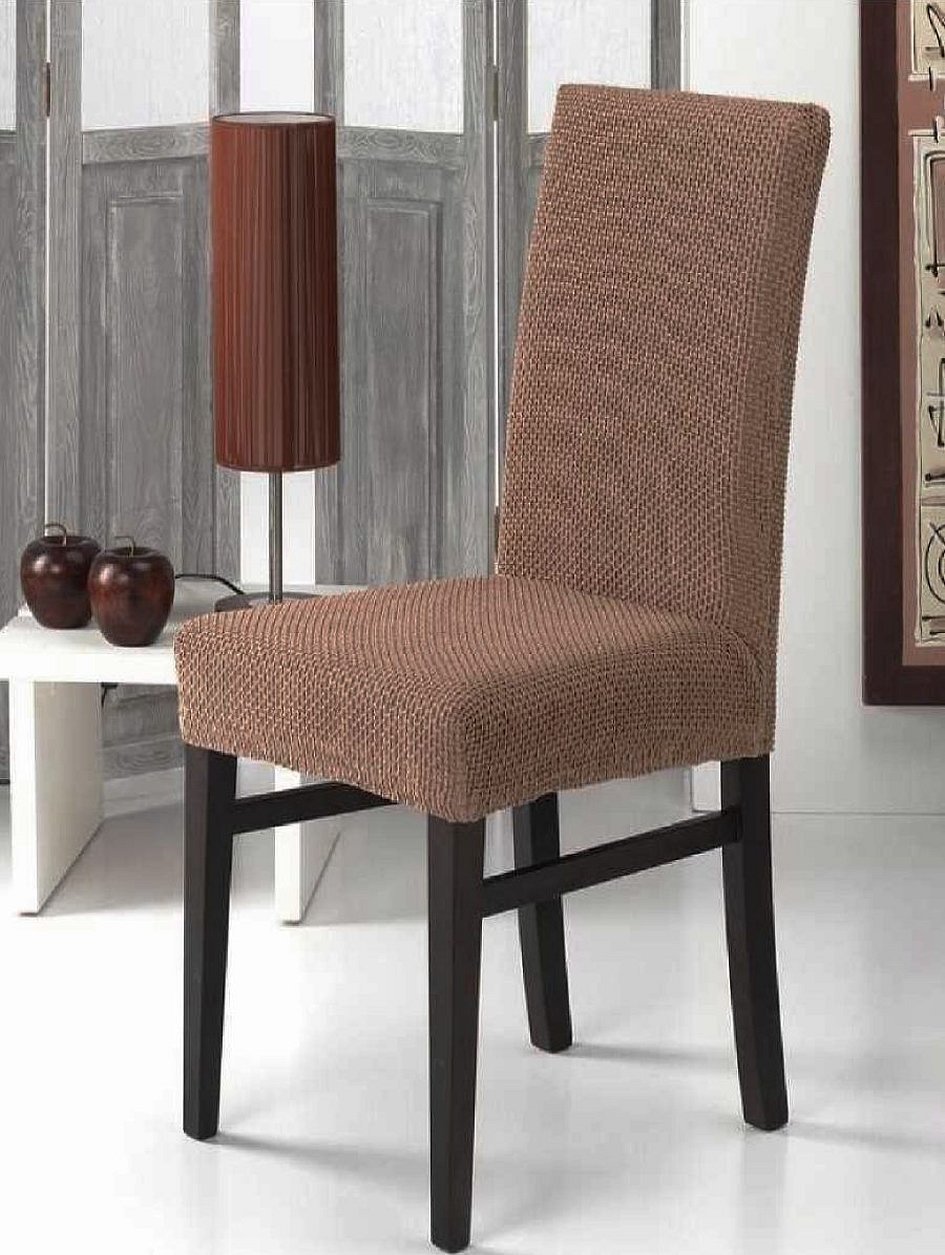
- The Benefits of Making Your Own Chair Covers
- How to choose a style
- Selecting fabric for sewing
- Cotton fabrics
- Linen fabrics
- Flock and microfiber
- Silk
- How to take measurements and make a pattern?
- Transferring the pattern onto the fabric
- Step-by-step instructions on how to sew a chair cover with a back
- Features of covers for children's chairs
- Beautiful examples of covers
The Benefits of Making Your Own Chair Covers
Firstly, covers that were created with your own hands not only meet all the style preferences of the hostess, but are also made conscientiously, from high-quality material. Chairs with a back and stools in protective covers do not lose any of their practical properties, but acquire new characteristics: beauty, elegance. Removable upholstery protects furniture from premature aging and wear.
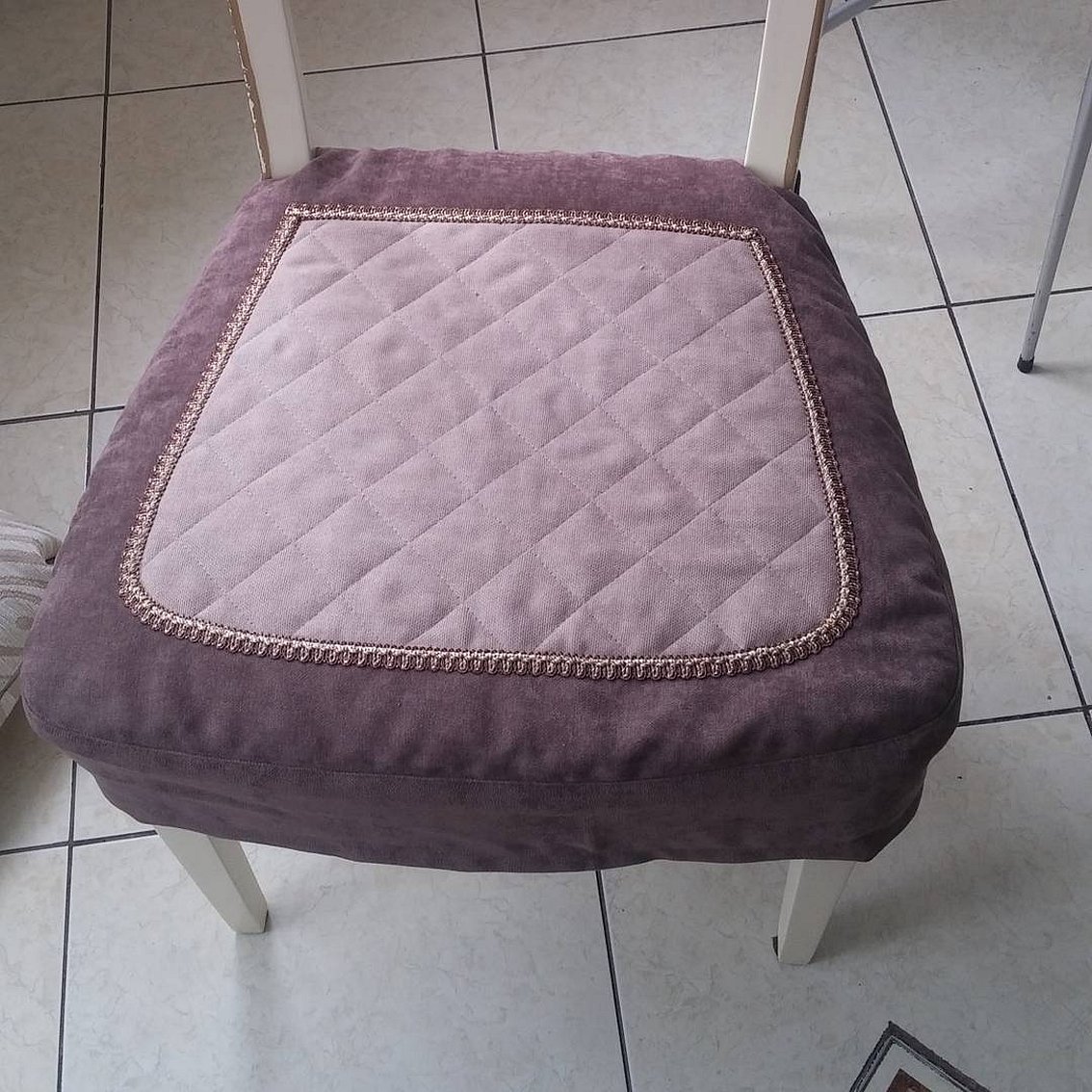
During the sewing process, you can determine how well a particular fabric fits the seat, how it sits and stays on it. It is impossible to check this when buying store-bought products.
Important! If the cover is sewn by hand, it will be of high quality and will cost a minimum of money or almost free if fabrics from old things were used for sewing.
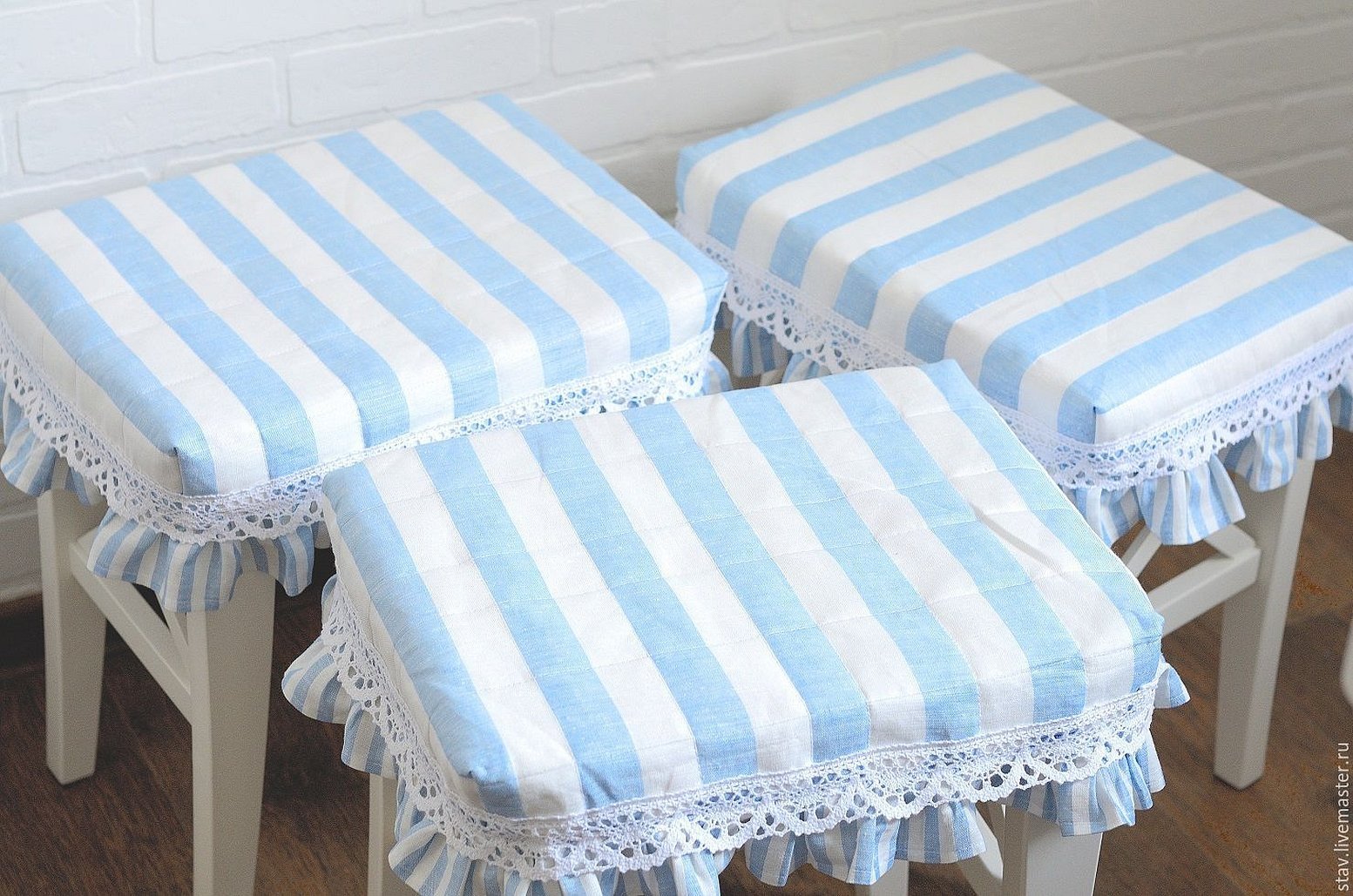
The advantages of making upholstery yourself are obvious:
- The seats will be original and will fit perfectly into the interior of the room if certain requirements are met;
- Furniture that has been improved by "facing" will become more comfortable and will "live" longer due to its protection;
- It will take little material and money to make, but the appearance of the furniture will change dramatically;
- Removable covers can be easily removed and washed if they get dirty.
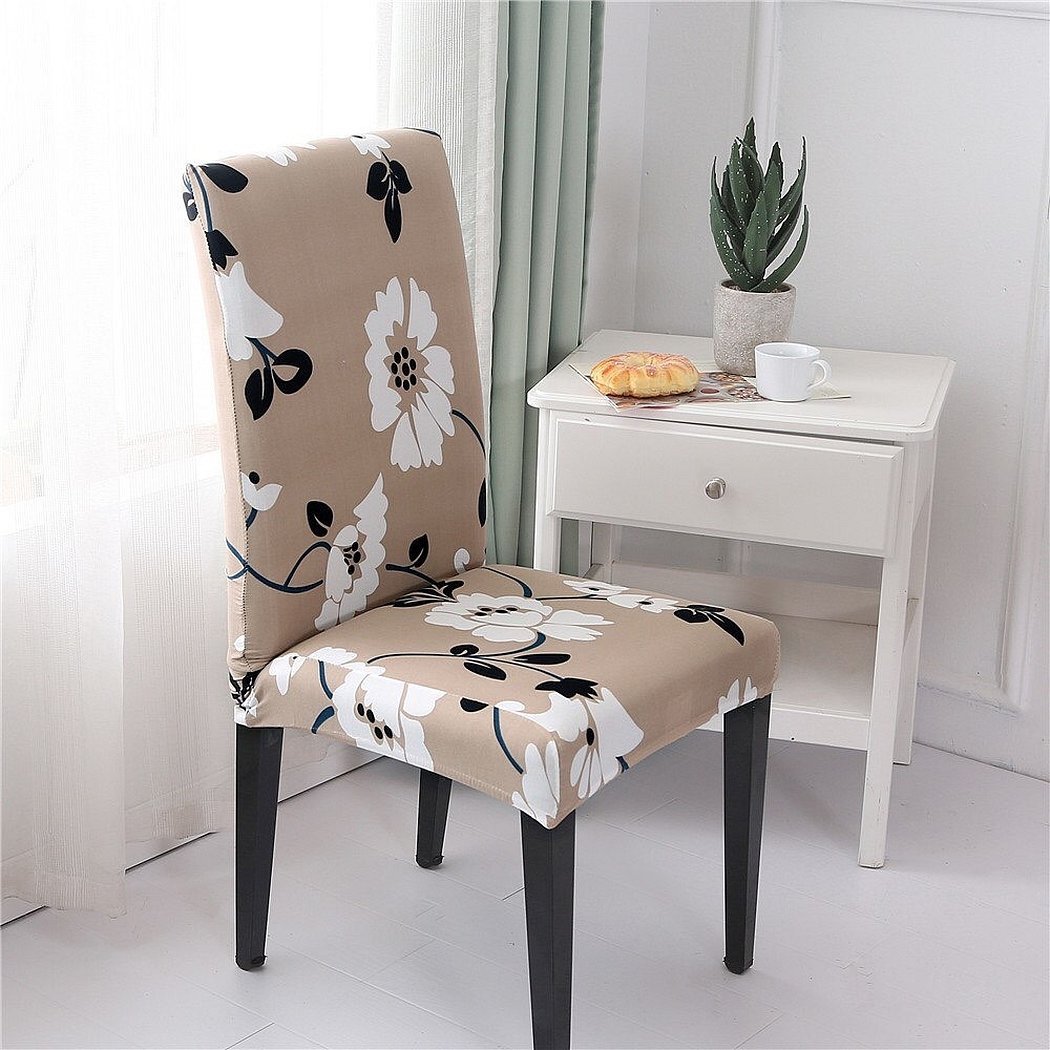
How to choose a style
Chair decoration is classified by several factors: style, including the shape and function of the product, and the material used for its manufacture. The latter will be discussed in detail in the next section.
Depending on the shape of the products, they are divided into several categories:
- Solid, which completely cover the furniture from external influences. They cover not only the seat, but also the back and legs. They have a strong fixation, which helps to radically change the design of the furniture and hide its flaws;
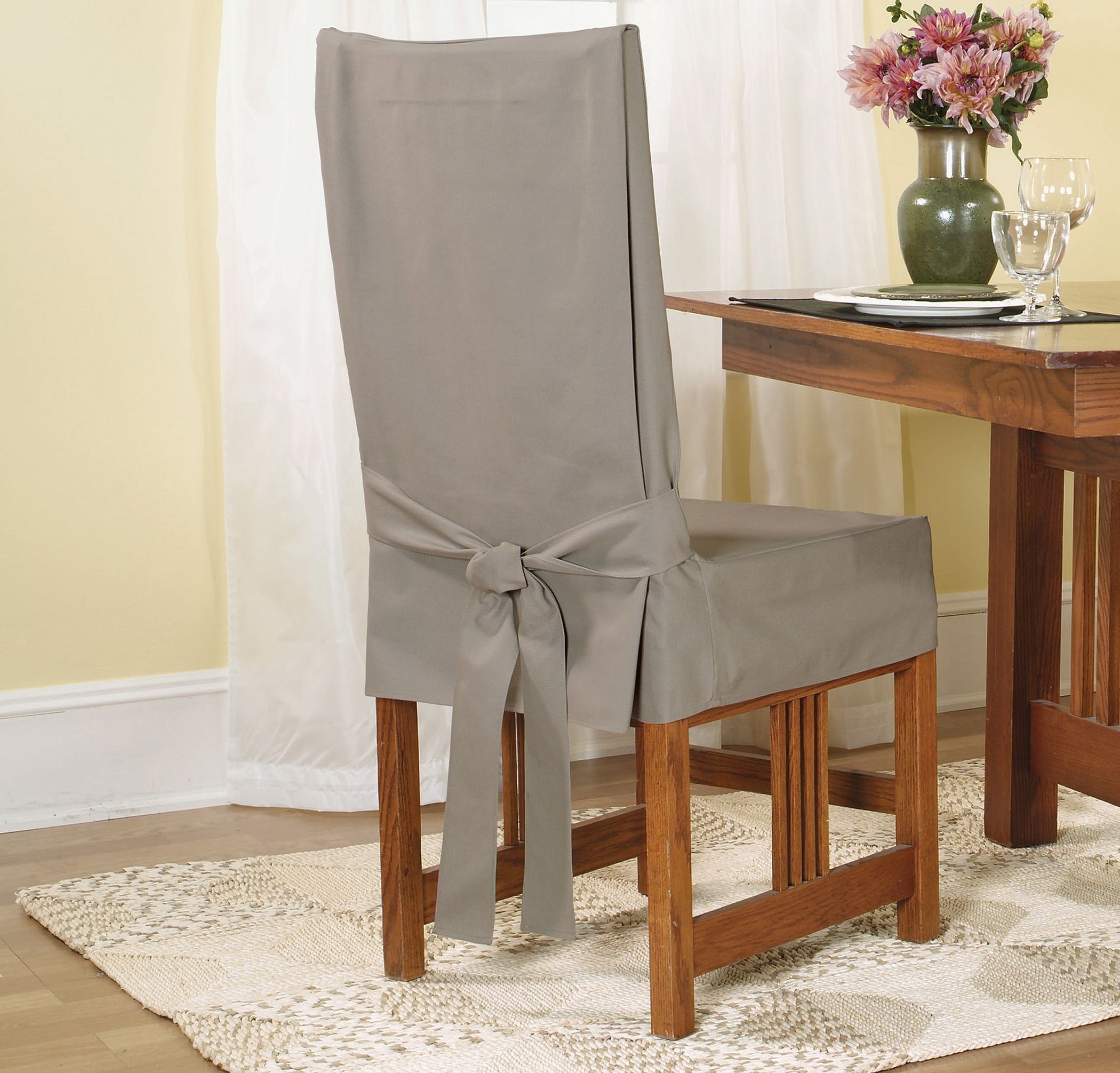
- Separate, which include separate covers for the back and seat. Due to this, specific advantages appear: ease of care, since you can easily remove part of the decor and wash it, practicality.

- Only the seat. It covers only the seat and the bottom of the chairs. This option is the most practical and requires little time and money.
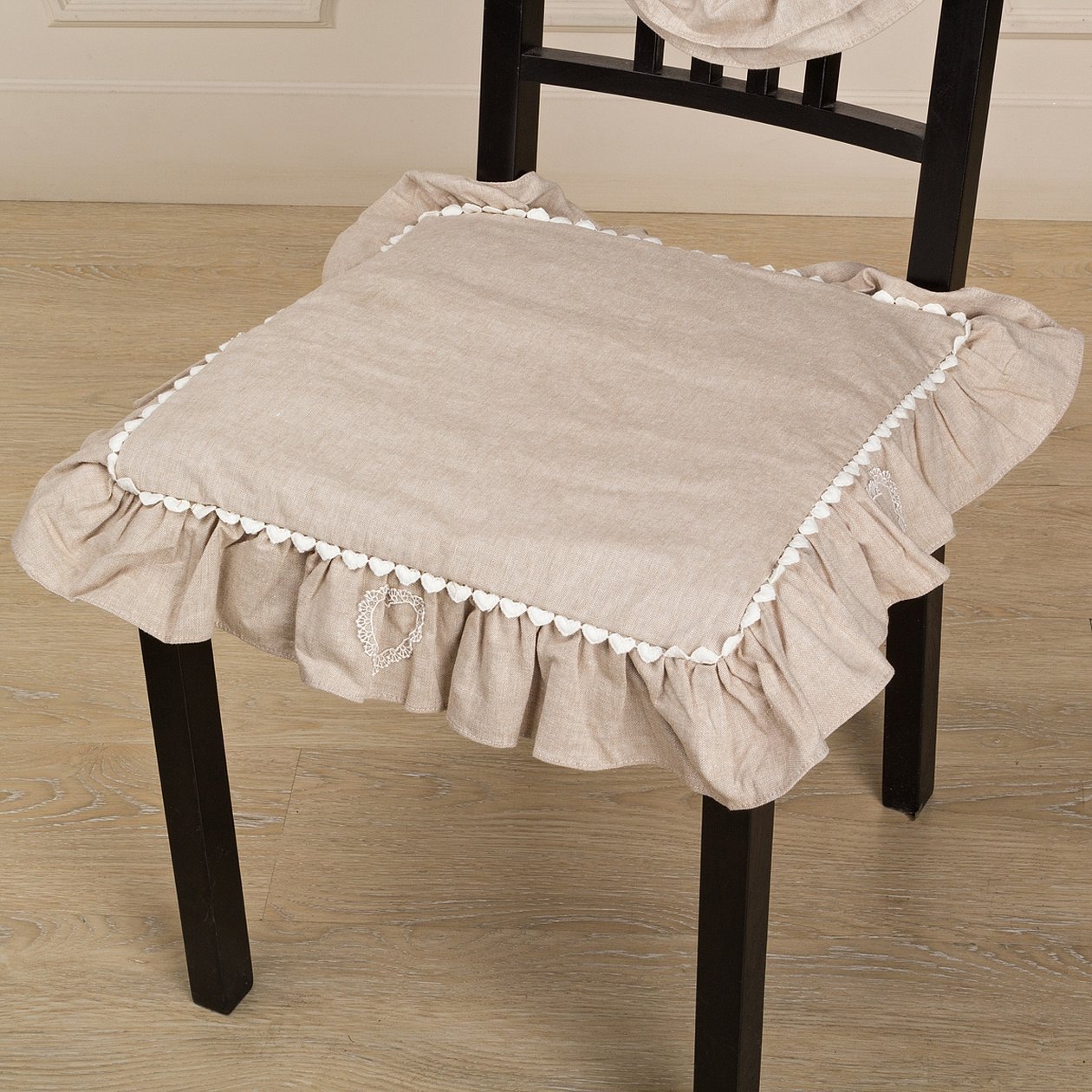
The choice of style also comes from the purpose and functions of the covers, based on which they are divided into:
- Everyday accessories used daily. It is worth remembering that such covers should be washed more often due to constant load. For this purpose, when choosing a material for them, rely on dense and highly durable fabric that is easy to clean;
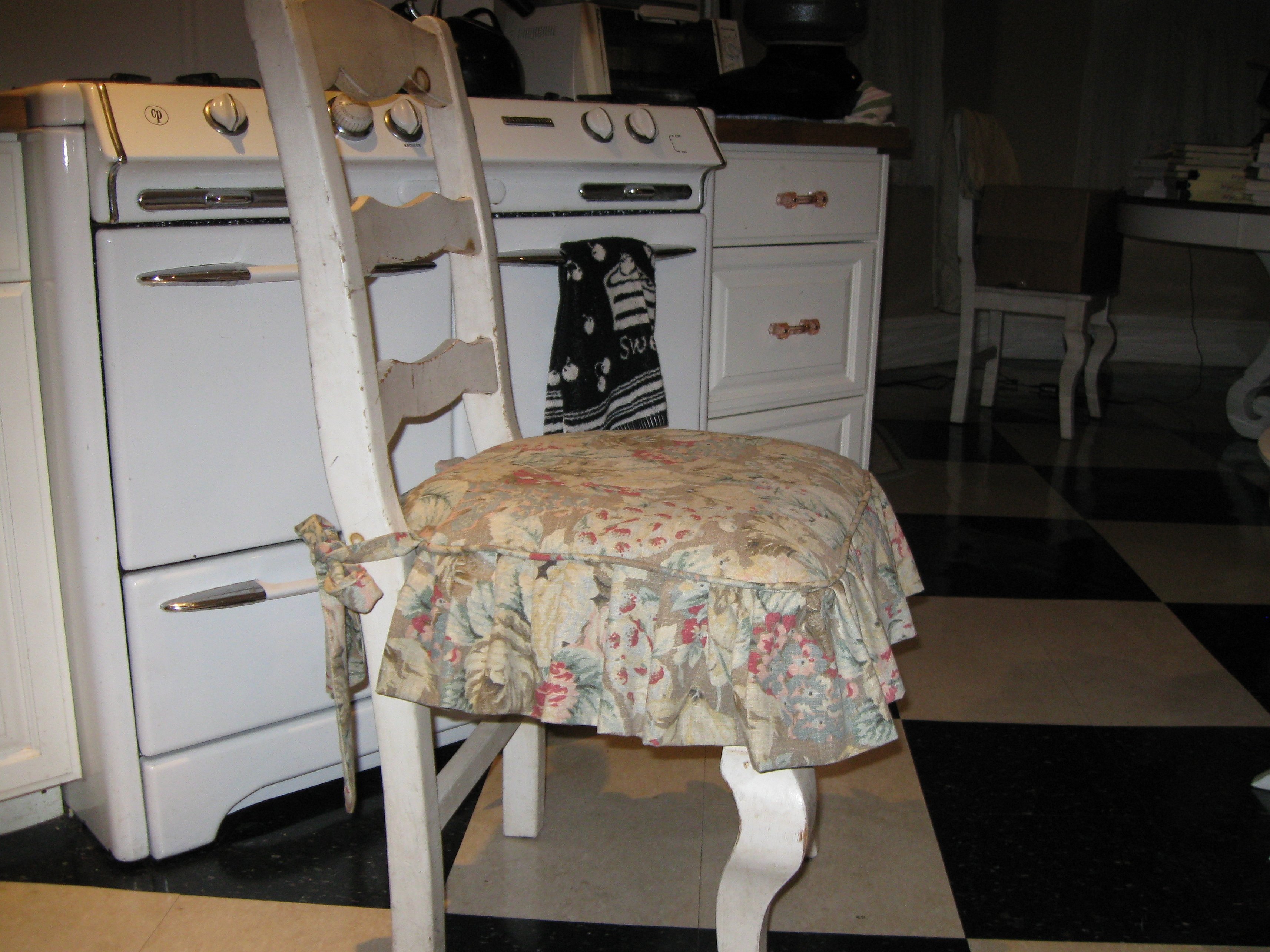
- Festive. They are intended for festive events and have the main task of decorating the design and creating a “wow” effect among guests, focusing attention on the table. They differ from ordinary ones in that they are usually made from expensive types of fabric with various decorations in the form of bows, frills, ribbons and draperies.
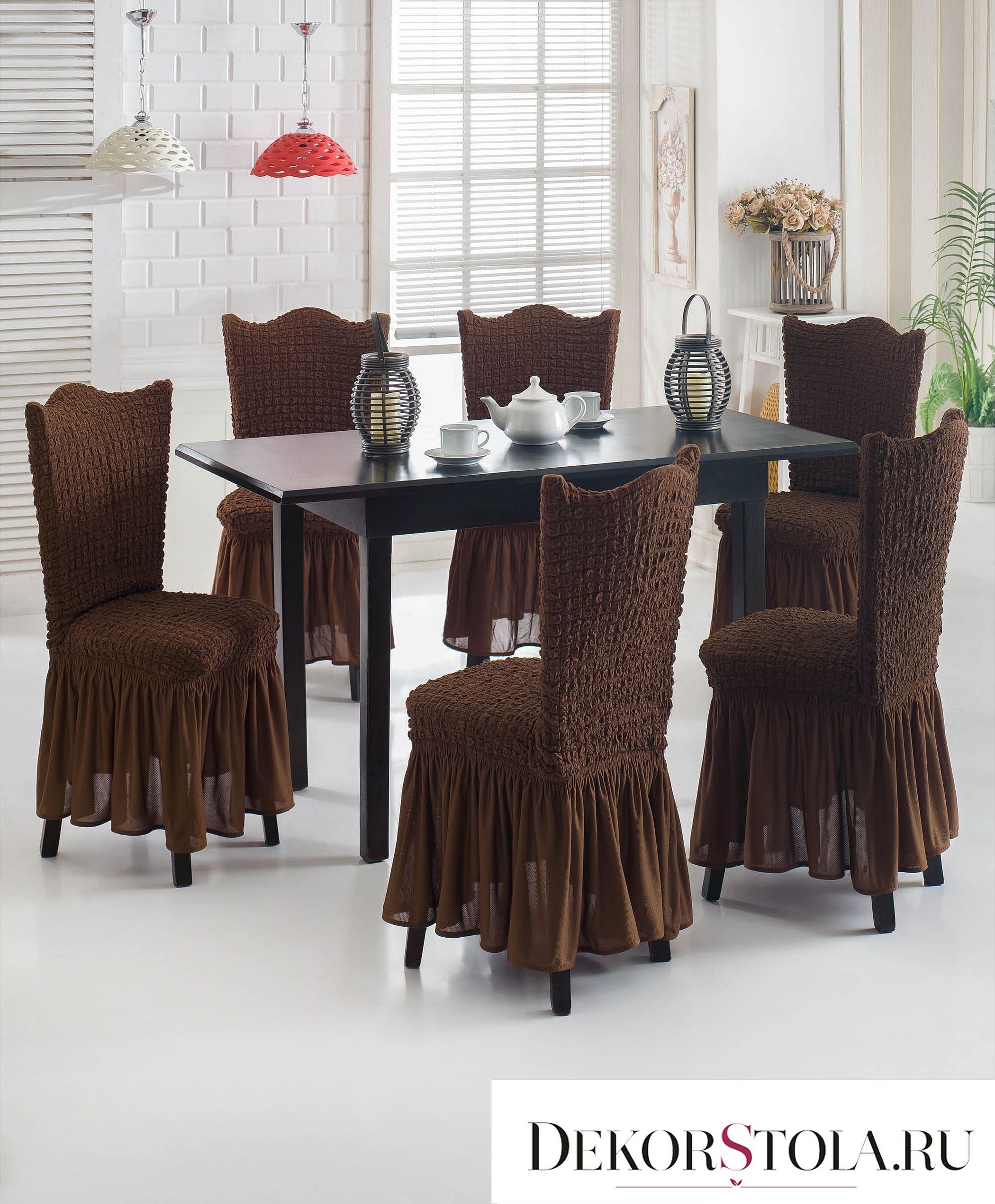
Selecting fabric for sewing
Sewing can be done from a variety of materials. Everything depends on the final purpose of the cover. For everyday use, you need a practical and inexpensive fabric, and for holidays - a beautiful and elegant one. In addition, take into account the room in which the chairs are located, its purpose and your own interior.
Important! For everyday use, you should choose a wear-resistant material that can be removed and washed or beaten at any time. One of the criteria is also the absence of electrification and dirt absorption. Cotton fabrics, microfiber, linen or silk are rightfully considered some of the best fabrics for sewing.
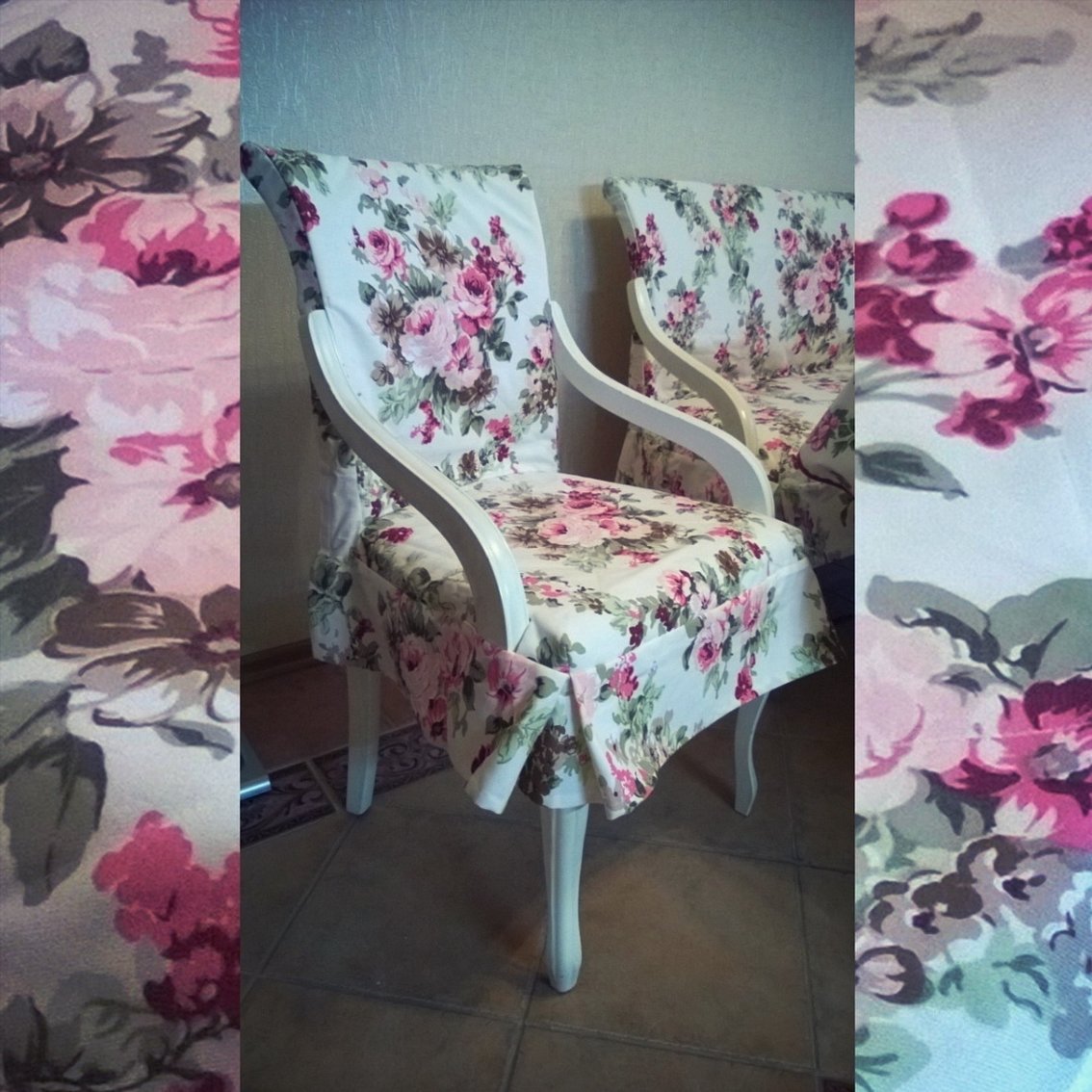
Cotton fabrics
Among them, satin, calico, denim or twill are the most preferred. Their key advantage is that they hold their shape well, do not cause allergies in sensitive people and can withstand machine washing. Cotton fabrics are inexpensive and are produced in various variations of shades, colors and patterns. They also have disadvantages: they quickly fade and get wet.
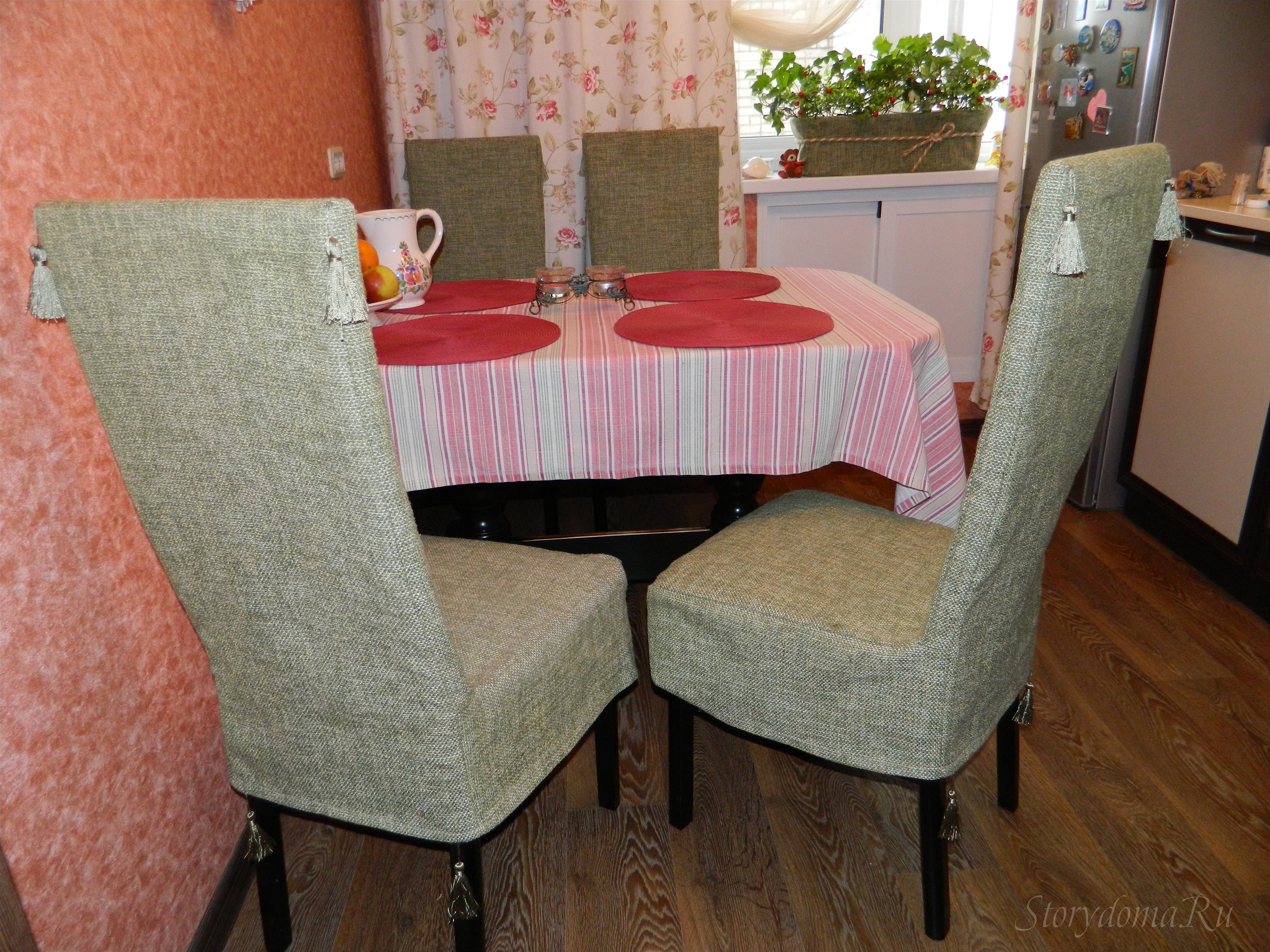
Linen fabrics
These include burlap, flax itself and canvas. They are environmentally friendly, highly durable, dirt-repellent and can be subjected to intensive machine washing and intensive use. Also, flax does not absorb dirt well, it is hypoallergenic and easy to care for. Rough linen fabrics with minimal processing are ideal for an everyday cover. The disadvantages are: difficulty in cleaning and ironing, rough texture. Linen covers are suitable for everyday use in country or ethnic style rooms.
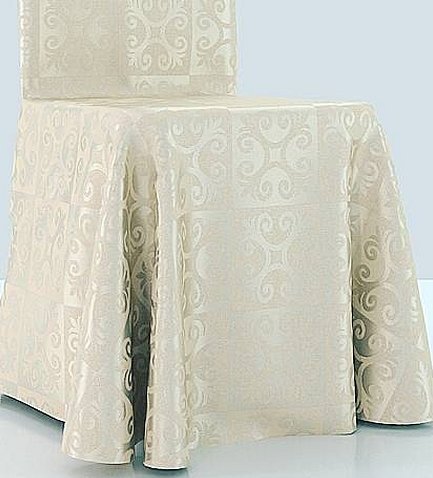
Flock and microfiber
These materials are new generation materials. Their main advantages are:
- Wear resistance;
- Attractiveness;
- No wrinkling;
- No deformation when washed.
Important! Despite this, microfiber and flock cannot be subjected to heat treatment: drying on a radiator or ironing. This is not necessary if there is no wrinkling.

Silk
Silk fabrics include: brocade, satin, crepe-satin. Their advantages are that they are durable, noble and elastic. Silk fabrics allow you to collect spectacular folds and draperies. There are also disadvantages: high price, demanding care and washing, gentle ironing. Such fabrics are suitable for creating festive covers in classical and neoclassical, Indian and Arabic styles.
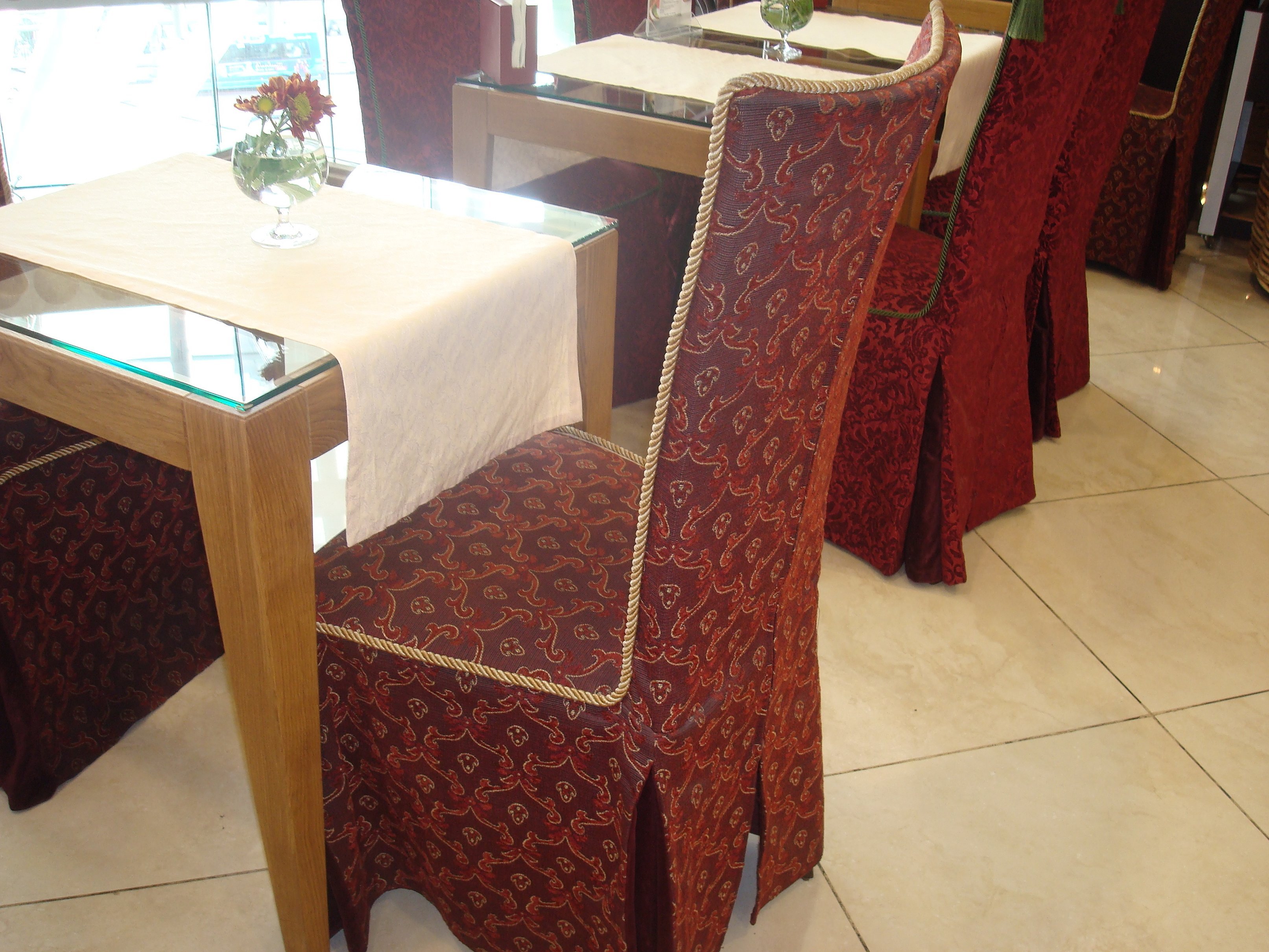
How to take measurements and make a pattern?
The first thing to do when sewing is to take measurements from the furniture. The pattern directly depends on the design and dimensions of the chair or stool. To take measurements, take a material that holds its shape well and lay it around the chair, securing everything with pins. At this stage, consider: how much the chair legs will be covered, whether there will be fasteners on the back, and so on.
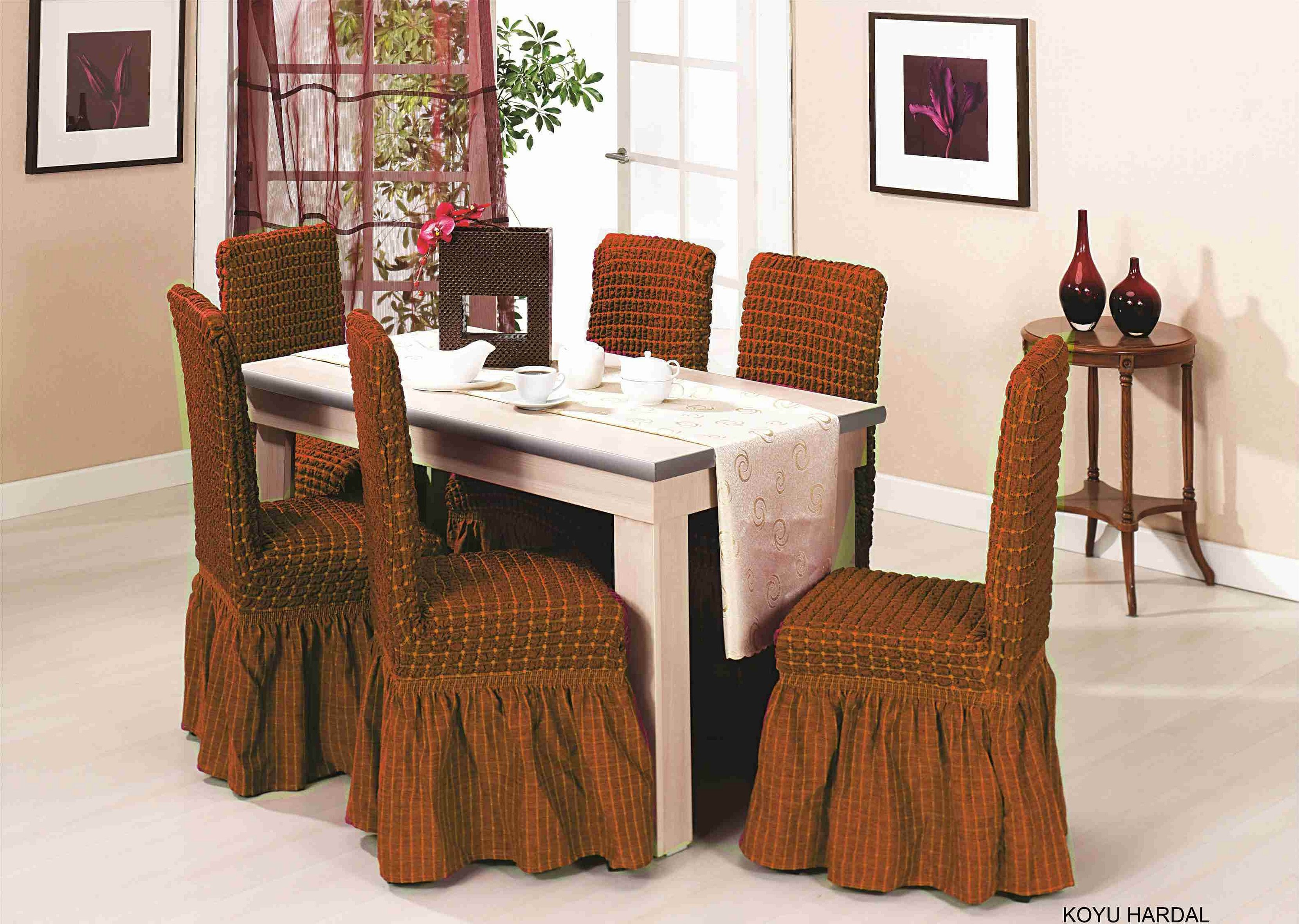
Measurements can also be taken using tracing paper. To do this, first apply a layer of paper to the seat and secure it with pins. After that, outline the contour. Add one and a half centimeters on each side for allowances. The details are then cut out. The back is measured in the same way if the sewing is done for a chair.
For the front part of the cape, the length of the legs and the width of the front edge of the product are measured. After that, a given rectangle is drawn on tracing paper with the addition of 5 cm at the bottom and 10 cm on the sides. To all this, an allowance of 1.5 cm is added for the seam of the upper edge.

The patterns for the sides of the "skirt" are made in the same way. 15 cm are added to the edge that is adjacent to the outer part of the back. The pattern is made in several copies. The measurement of the outer part of the back is done as follows:
- A large sheet of tracing paper is applied to the top of the back;
- The edges of the outer side are marked;
- Lines are drawn along the legs to the floor;
- Add 5 cm at the bottom and 1.5 cm for seam allowance.
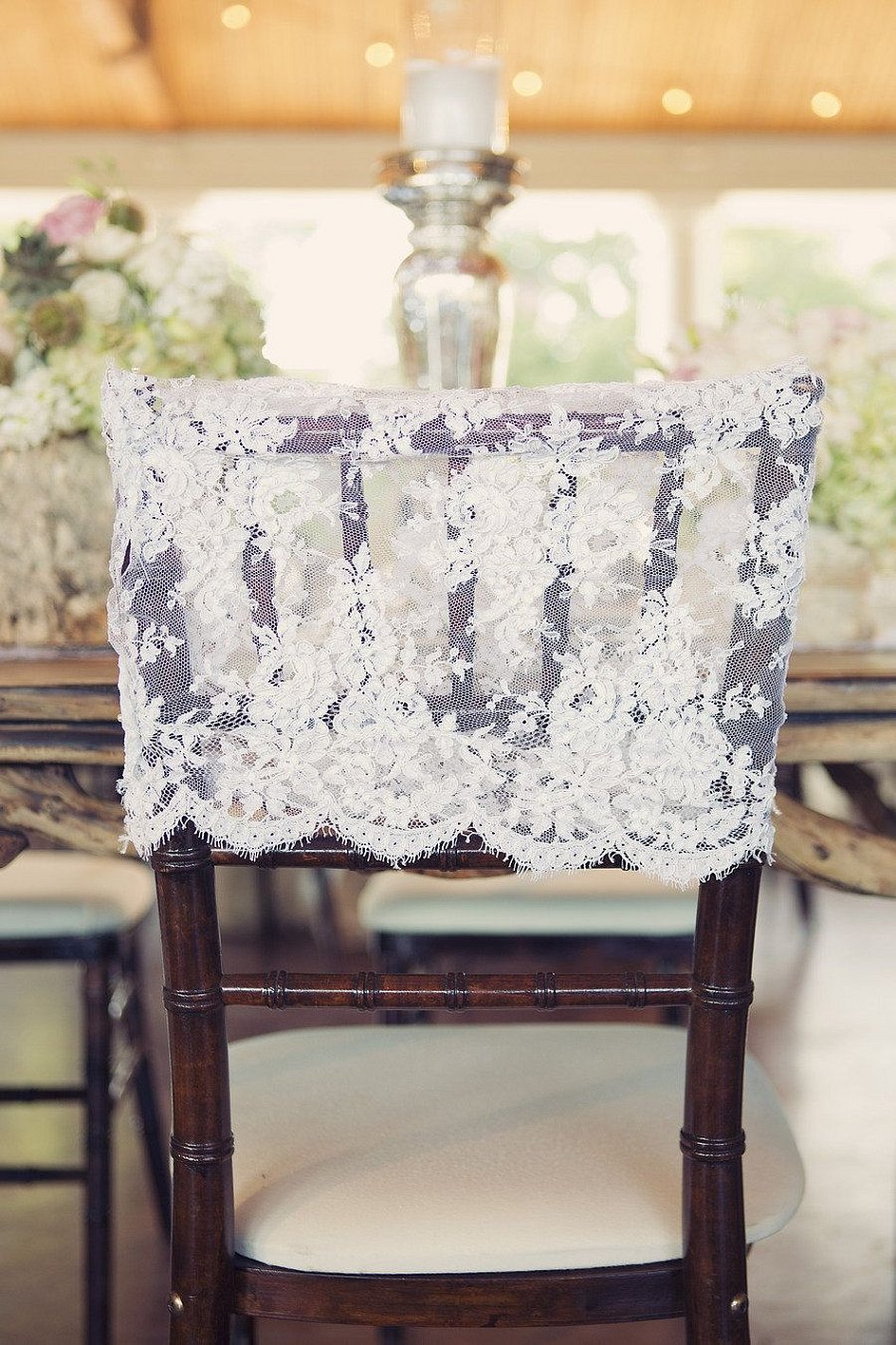
Important! The centers are marked at the top and bottom of the patterns, along which the fabric is then folded and cut into two equal parts.
Transferring the pattern onto the fabric
The drawing is made on tracing paper in the section above. After it is ready, it is transferred to the fabric taking into account the position of the grain lines. The transfer can be done with pencils, soap or chalk. It is worth remembering that the pattern is made in two copies.
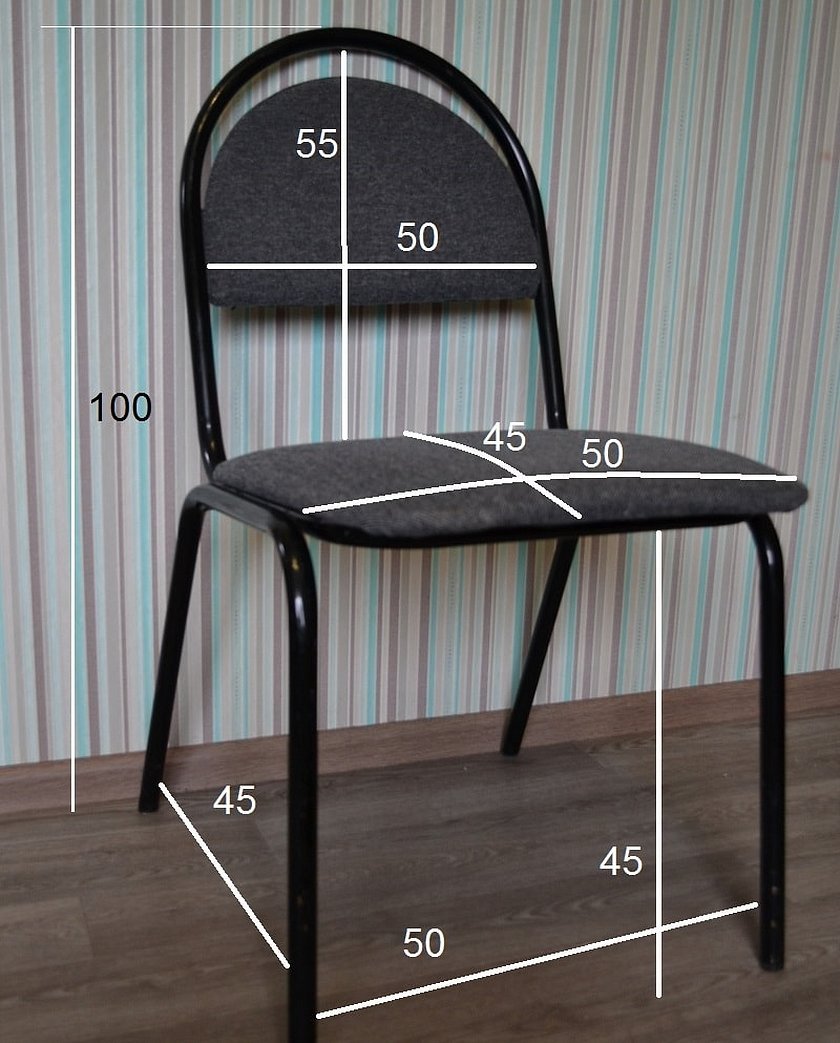
Step-by-step instructions on how to sew a chair cover with a back
You can order tailoring from the purchased fabric from a master, but it is much more profitable and pleasant to do it yourself. The only nuance: all measurements must be accurate and take into account seam allowances and shrinkage of the fabric when washing. For this, one or one and a half centimeters should be enough.
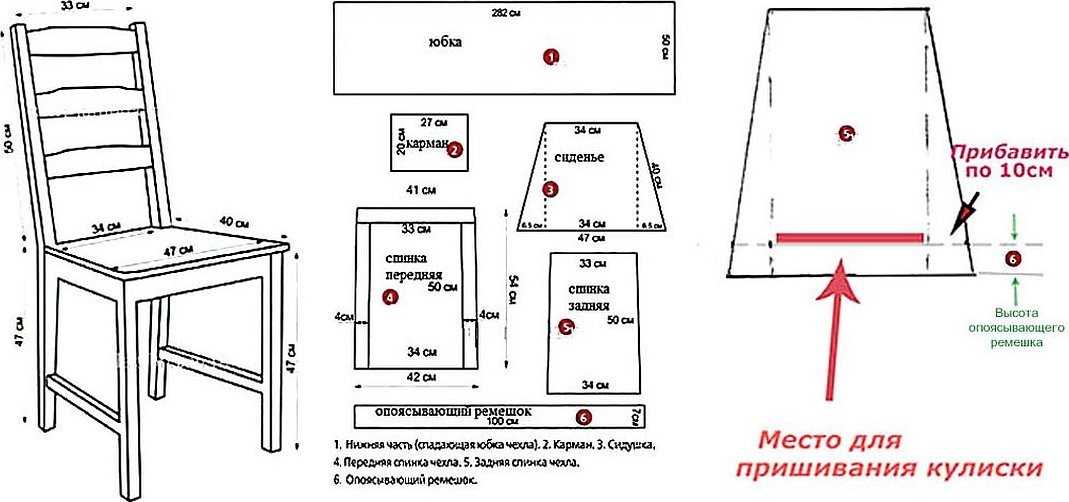
To get started, you need to prepare all the necessary materials and tools:
- Threads and needles;
- Sewing machine;
- Sticky tapes;
- Scissors and an awl.
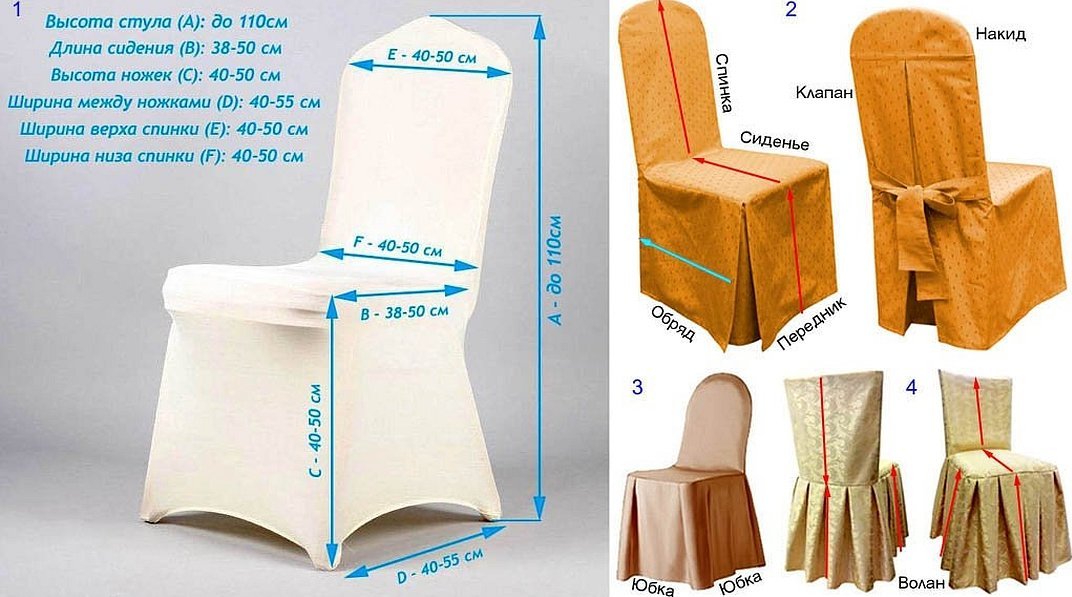
Step-by-step instructions for making it are as follows:
- Make a pattern on tracing paper or film that will fit well on the furniture to take all the measurements;
- Cut out the seat from soft synthetic padding and make allowances of 1 cm at the edges and 3 cm at the back;
- Place the padding polyester on the seat and measure the recesses for the legs at the back. Cut out the recesses along the contour;
- Determine the height of the cover and, leaving the bottom of the furniture open, measure the sides and back of the chair;
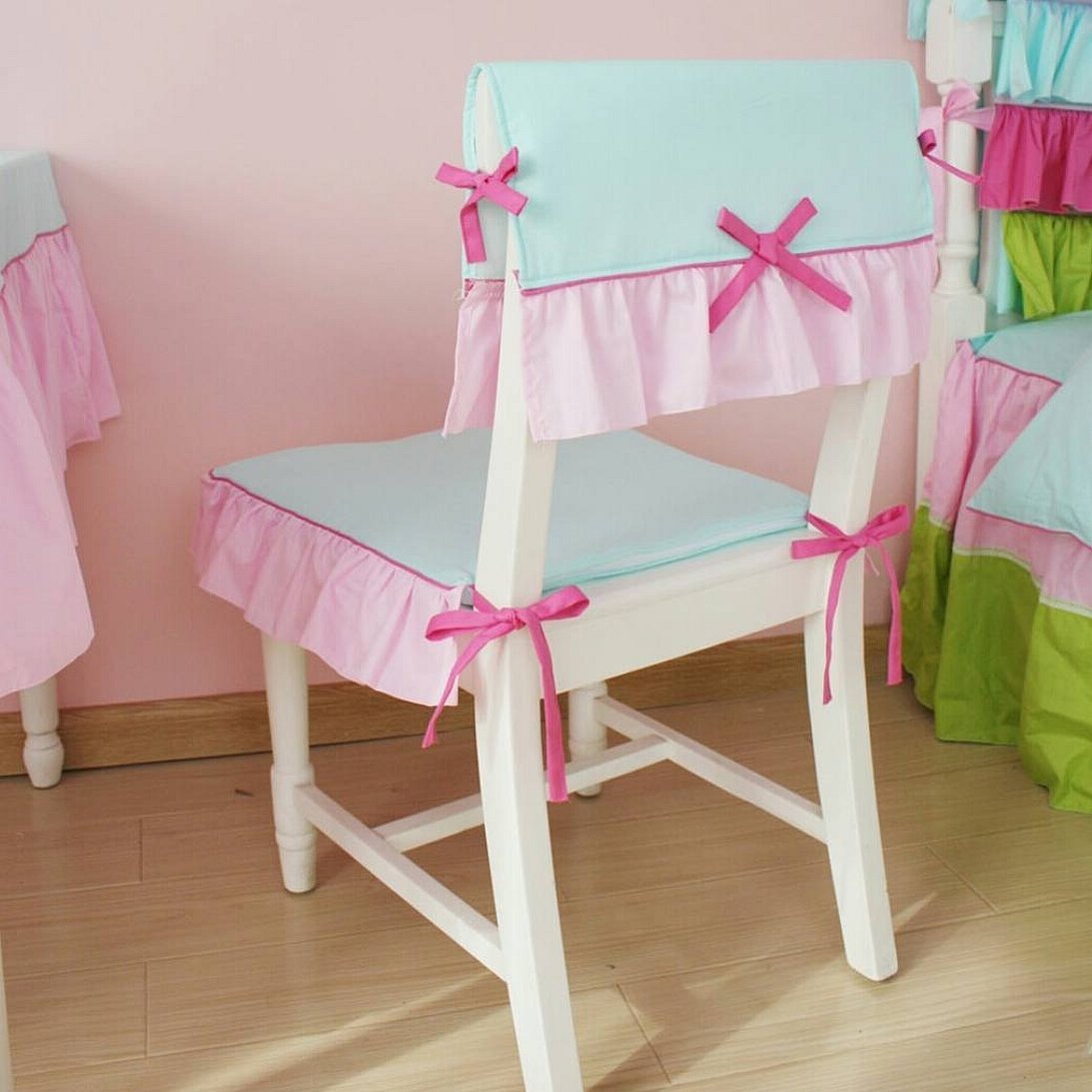
- Transfer the pattern onto the selected material and cut it out, remembering to leave allowances for seams and shrinkage;
- Round off the corners on the sides for a better fit of the cover;
- Sew all the pieces together using a sewing machine. Make notches on the rounded edges to avoid wrinkling of the fabric;
- Sew decorative elements in the form of braid or beads around the perimeter of the seat;
- Try on a chair cover;
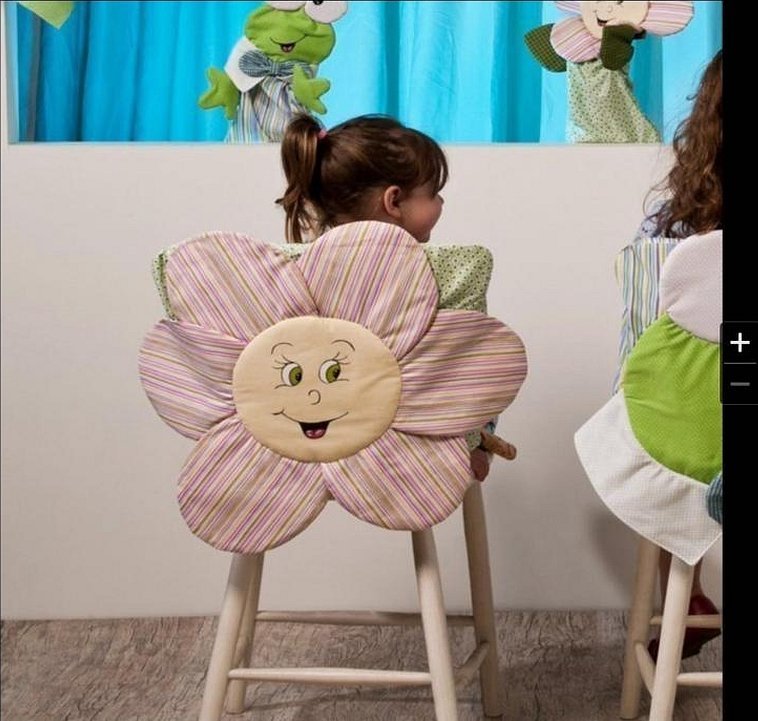
Features of covers for children's chairs
If the cover is made for a children's chair, then the best thing to do is to make it from hypoallergenic types of cotton fabric that are durable and wear-resistant. Such material allows air to pass through and is easy to wash. The fabric itself is quite cheap and it will not be a pity to throw away such a cover if it is damaged by a little rascal.
It is best to put a water-repellent cover on the high chair, which will be easy to wash. Since all furniture has its own design, you will have to take all measurements individually for the chair or for the standard cover.

Important! If the kit included a standard cover, you should carefully examine it and understand where the seams are and what design it has.
The general sewing method is simple:
- Fasten the main fabric and the lining;
- Place them face to face;
- Sew along the edges, leaving 20 cm unsewn on the side for turning the product inside out;
- Turn the upholstery inside out and straighten it out;
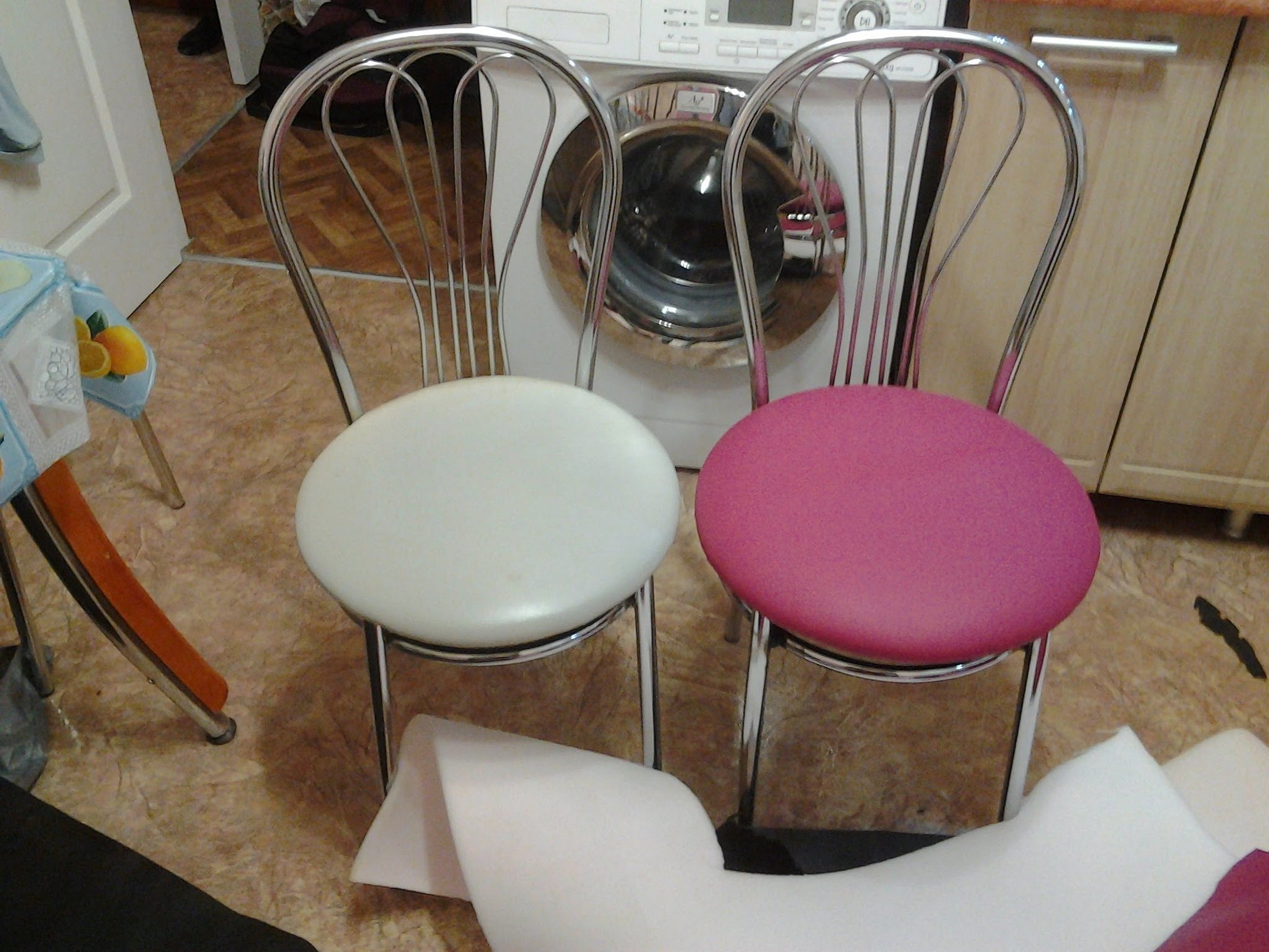
- Turn over the unsewn side and stitch it in any way;
- Mark the locations where seat belts should be placed if necessary;
- Decorate the product with bows, frills, ribbons or iron-on appliques.
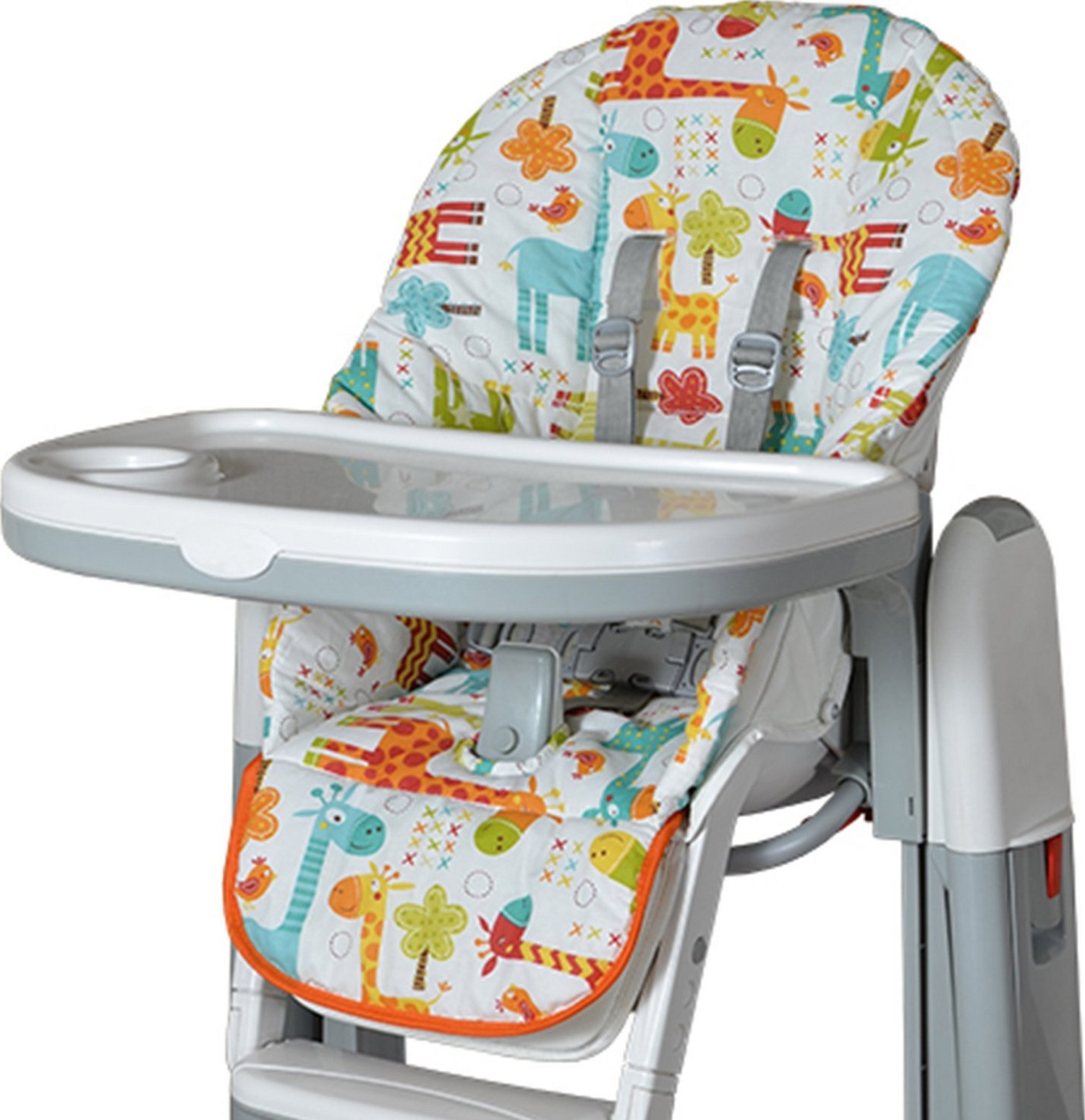
Beautiful examples of covers
To expand the reader's creative potential, below are some beautiful and elegant slipcovers that can restore any piece of furniture to its former glory.
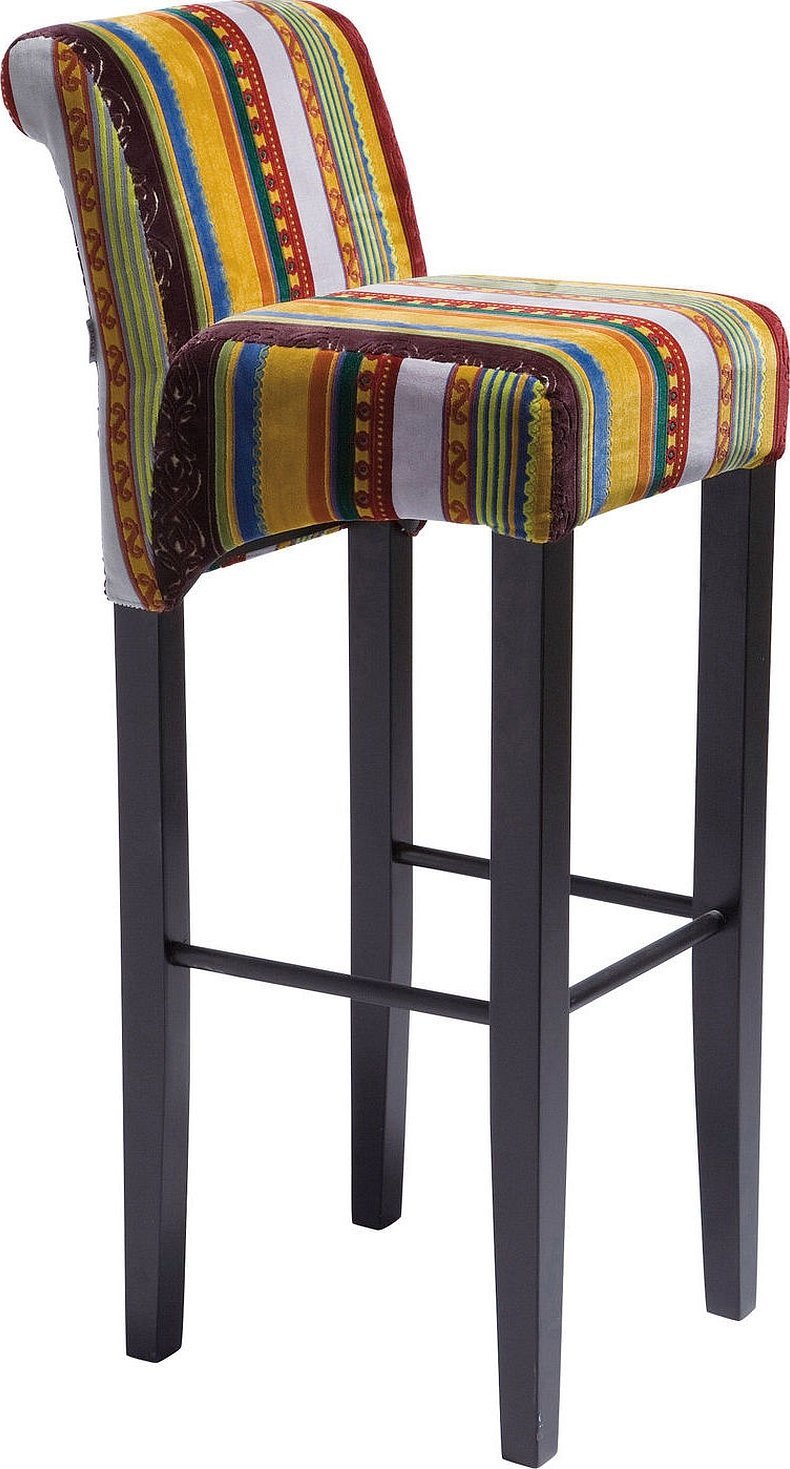
Thus, the pattern for chair covers is not particularly difficult. Anyone, even a beginner craftswoman, can do it and other stages of work. There are many classes of cover styles, they are divided into formal and everyday. Based on this, the material for production, the presence of decorative elements, etc. are selected.




